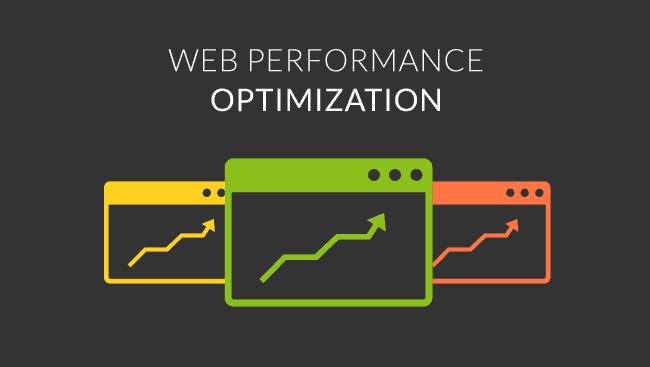
Top Web Optimization Techniques To Boost Your Site's Performance -
This article explores the most effective strategies to optimize your website, ensuring faster load times, smoother functionality, and higher conversion rates.
Why Website Optimization Matters More Than Ever
Every second counts online. Research shows that users expect a site to load within 2–3 seconds. Beyond that, bounce rates increase dramatically. Additionally, Google uses site speed and performance as ranking signals, making optimization essential for SEO success.
With optimized performance, businesses benefit from:
-
Improved user experience – keeping visitors engaged longer.
Better search rankings – thanks to Google's Core Web Vitals.
Increased conversions – a faster site builds trust and reduces abandonment.
Mobile readiness – delivering smooth experiences across all devices.
Core Web Optimization Techniques to Implement
Optimizing your website isn't about one single fix-it requires a combination of strategies. Below are some of the most impactful web optimization techniques to implement in 2025.
1. Optimize Images and Media AssetsLarge images are among the biggest culprits for slow-loading websites. Use these techniques:
-
Compress images without losing quality (tools like TinyPNG, Squoosh).
Use next-gen formats like WebP or AVIF for better compression.
Lazy loading ensures images load only when users scroll to them.
Responsive images adjust to different screen sizes automatically.
Excessive code slows down page rendering. Minification removes unnecessary characters like spaces and comments, while bundling reduces the number of server requests. Tools like Webpack, Gulp, or Terser can automate this process.
3. Implement Content Delivery Networks (CDNs)A CDN distributes your website's files across global servers, reducing latency and ensuring faster access for users worldwide. Popular CDNs include Cloudflare, Akamai, and Amazon CloudFront.
4. Enable Browser CachingCaching stores frequently accessed files on the user's device so they don't need to reload every time. Proper cache policies can dramatically improve repeat visits and speed up load times.
5. Prioritize Mobile OptimizationWith most users accessing sites via smartphones, mobile optimization is essential. Focus on:
-
Responsive design that adapts to various screen sizes.
Touch-friendly navigation with larger buttons and clear CTAs.
Fast-loading mobile pages (consider AMP where relevant).
Your server plays a vital role in performance. Optimize server response with:
-
Using a reliable hosting provider.
Optimizing databases with indexing and caching.
Reducing HTTP requests through streamlined code and fewer plugins.
Google's Core Web Vitals focus on three critical areas:
-
Largest Contentful Paint (LCP): measures loading performance.
First Input Delay (FID): measures interactivity.
Cumulative Layout Shift (CLS): measures visual stability.
Improving these metrics directly enhances user experience and SEO rankings.
8. Reduce Redirects and Fix Broken LinksToo many redirects create additional requests and slow down performance. Audit your site regularly to eliminate unnecessary redirects and fix broken links to maintain seamless navigation.
9. Use Gzip or Brotli CompressionServer-side compression significantly reduces file sizes before they reach the browser. Enabling Gzip or Brotli on your server ensures faster data transfers.
10. Implement Structured Data and Clean CodeSearch engines favor sites with well-structured, semantic code. Using structured data (schema markup) also enhances visibility in search results, improving click-through rates.
Advanced Web Optimization Techniques for 2025
Beyond the basics, advanced optimization strategies help websites achieve peak performance:
-
AI-driven personalization – delivering faster, smarter, tailored experiences.
Edge computing integration – bringing data closer to users.
Serverless architecture – minimizing backend resource use.
Progressive Web Apps (PWAs) – combining web speed with app-like functionality.
Measuring and Monitoring Website Performance
Optimization isn't a one-time task. Continuous monitoring is necessary to maintain peak performance. Use tools like:
-
Google PageSpeed Insights
GTmetrix
Pingdom
Lighthouse
These tools highlight areas for improvement and ensure ongoing optimization.
Conclusion: Building a Faster, Smarter Website
The digital landscape grows more competitive every day, and your website's performance can make or break success. By applying the right web optimization techniques, you can ensure faster load times, improved SEO, better user experiences, and higher conversions.
Investing in optimization today isn't just about speed-it's about future-proofing your website to meet user expectations and stay competitive in the ever-evolving online space.

Legal Disclaimer:
MENAFN provides the
information “as is” without warranty of any kind. We do not accept
any responsibility or liability for the accuracy, content, images,
videos, licenses, completeness, legality, or reliability of the information
contained in this article. If you have any complaints or copyright
issues related to this article, kindly contact the provider above.


















Comments
No comment